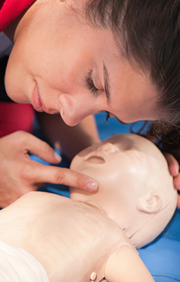Parenting is a universal journey, shared by millions, yet each experience is deeply personal. While certain truths about raising children resonate with most parents, the dynamics within every family are unique. Each parent brings their own perspective, and every child presents different challenges.
There’s no single method that works for everyone. With countless books offering advice on child-rearing, finding the right ones can feel like information overload.
Does Your Desired Book has an Audio Version? Search Here
That’s why we’ve curated a list of top parenting books that have earned high praise from educators, psychologists, and, most importantly, parents.
Best 12 Parenting Books
Whether you’re navigating the early years or grappling with the complexities of adolescence, these books offer invaluable insights to guide you on your journey. Of course, this is not a definitive list on parenting. But we hope it’s a good starting point for finding the tools you need for your unique situation. At the very least, may it open our eyes to the wealth of knowledge available at our local libraries, bookstores, or online.
Click on Book Covers for More Information
1. Parenting from the Inside Out
How A Deeper Self-Understanding Can Help You Raise Children Who Thrive
by Daniel J. Siegel and Mary Hartzell
 In Parenting from the Inside Out, Siegel and Hartzell dive deep into the connection between a parent’s self-awareness and their ability to parent effectively. The book emphasizes the importance of understanding your own emotions, triggers, and past experiences to create a more mindful and empathetic approach to parenting. It’s a transformative read for anyone looking to break free from negative patterns and foster a more connected and nurturing relationship with their children.
In Parenting from the Inside Out, Siegel and Hartzell dive deep into the connection between a parent’s self-awareness and their ability to parent effectively. The book emphasizes the importance of understanding your own emotions, triggers, and past experiences to create a more mindful and empathetic approach to parenting. It’s a transformative read for anyone looking to break free from negative patterns and foster a more connected and nurturing relationship with their children.
2. The Explosive Child
A New Approach For Understanding And Parenting Easily Frustrated, Chronically Inflexible Children
by Ross W. Greene
 The Explosive Child offers a compassionate and practical approach to dealing with children who have difficulty managing their frustration and often exhibit explosive behavior. Greene introduces the Collaborative & Proactive Solutions (CPS) model, which focuses on understanding the underlying causes of challenging behavior and working together with your child to find solutions. This book is particularly helpful for parents dealing with oppositional or easily frustrated children and offers strategies where conversations can take place in a calm manner.
The Explosive Child offers a compassionate and practical approach to dealing with children who have difficulty managing their frustration and often exhibit explosive behavior. Greene introduces the Collaborative & Proactive Solutions (CPS) model, which focuses on understanding the underlying causes of challenging behavior and working together with your child to find solutions. This book is particularly helpful for parents dealing with oppositional or easily frustrated children and offers strategies where conversations can take place in a calm manner.
3. Mind in the Making
The Seven Essential Life Skills Every Child Needs
by Ellen Galinsky
 Ellen Galinsky’s Mind in the Making identifies seven critical life skills that are essential for children’s success in school and life, such as focus, self-control, perspective-taking, and communication. Galinsky draws on the latest research in child development and provides practical tips and activities to help parents nurture these skills in their children. The book is both insightful and actionable, offering a roadmap for fostering essential qualities that will benefit children throughout their lives.
Ellen Galinsky’s Mind in the Making identifies seven critical life skills that are essential for children’s success in school and life, such as focus, self-control, perspective-taking, and communication. Galinsky draws on the latest research in child development and provides practical tips and activities to help parents nurture these skills in their children. The book is both insightful and actionable, offering a roadmap for fostering essential qualities that will benefit children throughout their lives.
4. Good Inside
A Guide to Becoming the Parent You Want to Be
by Dr. Becky Kennedy
 Good Inside is a refreshing and empathetic take on modern parenting. Dr. Becky, as she’s known to her followers, combines her expertise as a clinical psychologist with a compassionate approach that emphasizes the inherent goodness in every child. The book offers practical strategies for addressing challenging behaviors while maintaining a strong, loving connection with your child. Dr. Becky focuses on understanding the emotions driving your child’s behavior and provides tools for responding in ways that reinforce their sense of security and self-worth. Good Inside is an empowering read for parents who want to approach parenting with more empathy, patience, and positivity.
Good Inside is a refreshing and empathetic take on modern parenting. Dr. Becky, as she’s known to her followers, combines her expertise as a clinical psychologist with a compassionate approach that emphasizes the inherent goodness in every child. The book offers practical strategies for addressing challenging behaviors while maintaining a strong, loving connection with your child. Dr. Becky focuses on understanding the emotions driving your child’s behavior and provides tools for responding in ways that reinforce their sense of security and self-worth. Good Inside is an empowering read for parents who want to approach parenting with more empathy, patience, and positivity.
5. I Forgive You for Your Diaper
at 3 AM
by A. Parent
 I Forgive You for Your Diaper is a witty and heartfelt take on the rollercoaster ride of early parenthood. With a mix of humor and vulnerability, the author captures the sleepless nights, the endless diaper changes, and the profound love that keeps you going despite exhaustion. This book is a relatable guide that acknowledges the real challenges new parents face. Through funny anecdotes and honest reflections, I Forgive You for Your Diaper provides comfort and reassurance, reminding parents that it’s okay to laugh, cry, and find forgiveness in those 3am moments. Perfect for parents looking for humor and validation in their everyday chaos.
I Forgive You for Your Diaper is a witty and heartfelt take on the rollercoaster ride of early parenthood. With a mix of humor and vulnerability, the author captures the sleepless nights, the endless diaper changes, and the profound love that keeps you going despite exhaustion. This book is a relatable guide that acknowledges the real challenges new parents face. Through funny anecdotes and honest reflections, I Forgive You for Your Diaper provides comfort and reassurance, reminding parents that it’s okay to laugh, cry, and find forgiveness in those 3am moments. Perfect for parents looking for humor and validation in their everyday chaos.
6. The Whole-Brain Child
12 Revolutionary Strategies to Nurture Your Child’s Developing Mind
by Daniel J. Siegel and Tina Payne Bryson
 If you’re looking to understand how your child’s brain works and how you can better connect with them, The Whole-Brain Child is a must-read. Siegel and Bryson masterfully break down complex neuroscience into simple, actionable strategies that help you nurture your child’s emotional and intellectual development. The book offers practical tips for integrating the left and right hemispheres of the brain, helping kids manage their emotions and build resilience. It’s a perfect blend of science and practical advice that any parent can apply.
If you’re looking to understand how your child’s brain works and how you can better connect with them, The Whole-Brain Child is a must-read. Siegel and Bryson masterfully break down complex neuroscience into simple, actionable strategies that help you nurture your child’s emotional and intellectual development. The book offers practical tips for integrating the left and right hemispheres of the brain, helping kids manage their emotions and build resilience. It’s a perfect blend of science and practical advice that any parent can apply.
7. The Gift of Failure
How the Best Parents Learn to Let Go So Their Children Can Succeed
by Jessica Lahey
 The Gift of Failure is a thought-provoking book that challenges the idea of overprotective parenting. Jessica Lahey, an educator and parent, argues that allowing children to experience failure and learn from it is crucial for their development. The book provides guidance on how to step back, give children more autonomy, and encourage them to develop resilience, problem-solving skills, and independence. It’s an empowering read for parents who want to raise confident, capable, and self-reliant children.
The Gift of Failure is a thought-provoking book that challenges the idea of overprotective parenting. Jessica Lahey, an educator and parent, argues that allowing children to experience failure and learn from it is crucial for their development. The book provides guidance on how to step back, give children more autonomy, and encourage them to develop resilience, problem-solving skills, and independence. It’s an empowering read for parents who want to raise confident, capable, and self-reliant children.
8. The 5 Love Languages of Children
The Secret of Loving Children Effectively
by Gary Chapman and Ross Campbell
 Understanding how your child gives and receives love is crucial for building a strong, supportive relationship. The 5 Love Languages of Children explores the concept that each child has a primary love language—words of affirmation, acts of service, receiving gifts, quality time, or physical touch. Chapman and Campbell provide practical tools to help parents identify and speak their child’s love language, ensuring that they feel deeply loved and understood. This book is a game-changer for parents looking to strengthen their bond with their kids.
Understanding how your child gives and receives love is crucial for building a strong, supportive relationship. The 5 Love Languages of Children explores the concept that each child has a primary love language—words of affirmation, acts of service, receiving gifts, quality time, or physical touch. Chapman and Campbell provide practical tools to help parents identify and speak their child’s love language, ensuring that they feel deeply loved and understood. This book is a game-changer for parents looking to strengthen their bond with their kids.
9. How to Talk So Kids Will Listen & Listen So Kids Will Talk
by Adele Faber and Elaine Mazlish
 Communication is at the heart of every parent-child relationship, and How to Talk So Kids Will Listen & Listen So Kids Will Talk is the ultimate guide to mastering it. Faber and Mazlish offer effective techniques for fostering open, respectful dialogue with your children. Their strategies are not only practical but also rooted in empathy, helping parents understand their child’s perspective while expressing their own needs clearly. This book has been a go-to for parents for decades, and it’s easy to see why.
Communication is at the heart of every parent-child relationship, and How to Talk So Kids Will Listen & Listen So Kids Will Talk is the ultimate guide to mastering it. Faber and Mazlish offer effective techniques for fostering open, respectful dialogue with your children. Their strategies are not only practical but also rooted in empathy, helping parents understand their child’s perspective while expressing their own needs clearly. This book has been a go-to for parents for decades, and it’s easy to see why.
10. Simplicity Parenting
Using the Extraordinary Power of Less to Raise Calmer, Happier, and More Secure Kids
by Kim John Payne with Lisa M. Ross
 With kids growing up in an environment of constant stimulation and endless choices, Simplicity Parenting offers a refreshing approach to raising children. Payne advocates for simplifying your child’s environment, routines, and schedule to reduce stress and enhance their emotional well-being. The book provides actionable steps for decluttering your child’s life—both physically and mentally—allowing them to focus on what truly matters. It’s a compelling read for parents who want to create a more peaceful, balanced, and meaningful family life.
With kids growing up in an environment of constant stimulation and endless choices, Simplicity Parenting offers a refreshing approach to raising children. Payne advocates for simplifying your child’s environment, routines, and schedule to reduce stress and enhance their emotional well-being. The book provides actionable steps for decluttering your child’s life—both physically and mentally—allowing them to focus on what truly matters. It’s a compelling read for parents who want to create a more peaceful, balanced, and meaningful family life.
11. Raising An Emotionally Intelligent Child
The Heart of Parenting
by John Gottman and Joan DeClaire
 Emotional intelligence is a key predictor of success and happiness, and Raising An Emotionally Intelligent Child by renowned psychologist John Gottman provides a comprehensive guide to fostering this critical skill in your child. The book introduces the concept of “emotion coaching,” a technique that helps parents guide their children through difficult emotions and develop a healthy emotional toolkit. Gottman’s approach is grounded in research and offers practical, easy-to-follow strategies for helping your child manage their feelings effectively.
Emotional intelligence is a key predictor of success and happiness, and Raising An Emotionally Intelligent Child by renowned psychologist John Gottman provides a comprehensive guide to fostering this critical skill in your child. The book introduces the concept of “emotion coaching,” a technique that helps parents guide their children through difficult emotions and develop a healthy emotional toolkit. Gottman’s approach is grounded in research and offers practical, easy-to-follow strategies for helping your child manage their feelings effectively.
12. No-Drama Discipline
The Whole-Brain Way to Calm the Chaos and Nurture Your Child’s Developing Mind
by Daniel J. Siegel with Tina Payne Bryson
 Discipline is one of the trickiest aspects of parenting, and No-Drama Discipline by Siegel and Bryson offers a compassionate and effective approach. The book shifts the focus from punishment to teaching, helping parents understand the root cause of their child’s behavior and how to guide them towards better choices. By emphasizing connection before correction, No-Drama Discipline helps parents build trust and mutual respect with their children, leading to a more peaceful and cooperative home environment.
Discipline is one of the trickiest aspects of parenting, and No-Drama Discipline by Siegel and Bryson offers a compassionate and effective approach. The book shifts the focus from punishment to teaching, helping parents understand the root cause of their child’s behavior and how to guide them towards better choices. By emphasizing connection before correction, No-Drama Discipline helps parents build trust and mutual respect with their children, leading to a more peaceful and cooperative home environment.
Building Your Parenting Library
Each of these books offers unique insights and practical tools that can make a real difference in your parenting journey. Whether you’re looking to improve communication, foster emotional intelligence, or create a more peaceful home, these reads have something valuable to offer. Investing time in understanding your child’s needs—and your own—can transform your parenting experience and help you build a stronger, more connected family.
So, if you’re ready to enrich your parenting toolkit, any of these books would be an excellent place to start.







 I Forgive You for Your Diaper is a witty and heartfelt take on the rollercoaster ride of early parenthood. With a mix of humor and vulnerability, the author captures the sleepless nights, the endless diaper changes, and the profound love that keeps you going despite exhaustion. This book is a relatable guide that acknowledges the real challenges new parents face. Through funny anecdotes and honest reflections,
I Forgive You for Your Diaper is a witty and heartfelt take on the rollercoaster ride of early parenthood. With a mix of humor and vulnerability, the author captures the sleepless nights, the endless diaper changes, and the profound love that keeps you going despite exhaustion. This book is a relatable guide that acknowledges the real challenges new parents face. Through funny anecdotes and honest reflections, 












